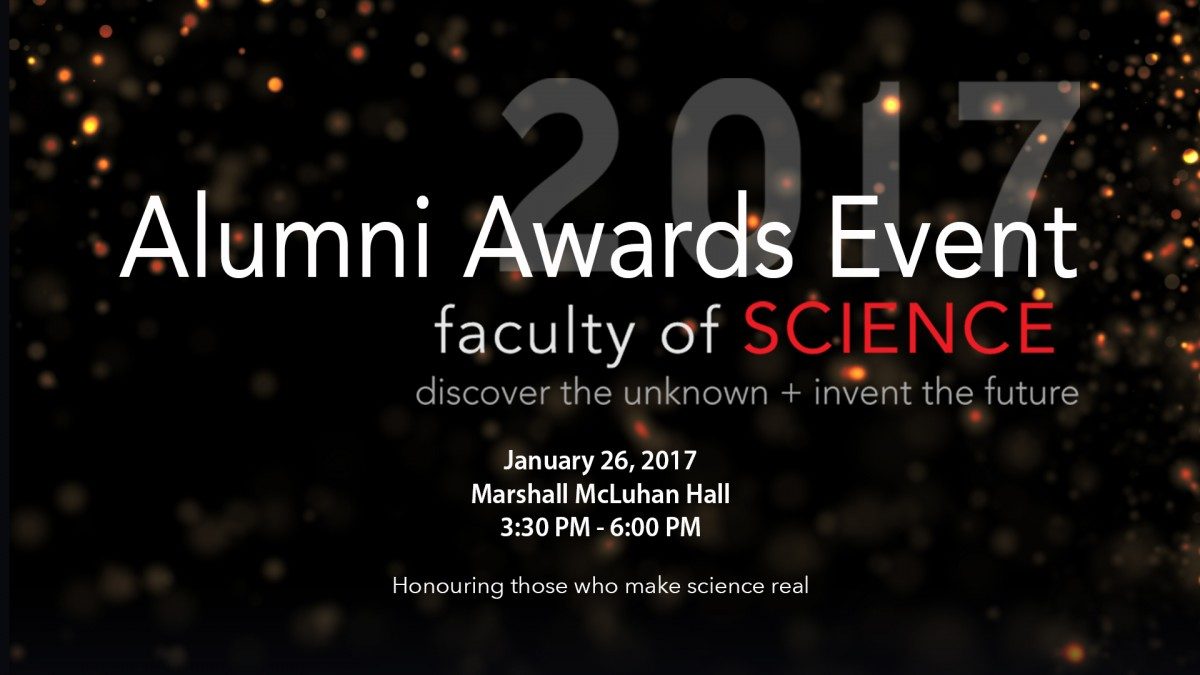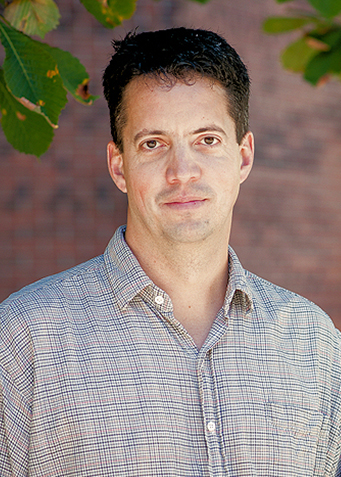
Meet Dr. Murray Humphries, recipient of the Faculty of Science Alumni Award 2017
Environmental Physiologist. Professor. McGill Chair in Northern Research
As a young boy growing up hunting, fishing and loving all things outdoors in and around Brandon, Manitoba, Murray Humphries, [BSc (Hons.), Zoology/93], was drawn to the nature section of his local library and bookstore. He would stare at images of animals and nature, dreaming about one day getting the chance to work with wildlife. Today, he’s literally ‘living the dream’.

Dr. Murray Humphries
“That’s the great thing about a dream job – you get to live your childhood dream of spending lots of your time in the outdoors with wildlife,” says Dr. Humphries, now one of the world’s leading researchers in the field of Environmental Physiology. He has pioneered methods of field-based respirometry, combining physiological measurements of northern mammals in their natural habitat with behavioural observations and ecological data, to provide unparalleled insights into how animals adapt to environmental change. His work holds exceptional promise in informing our future in the face of human-induced climate change.
“The passion people in the northern communities have for wildlife is a huge contributor to why I have such a dream job. It’s incredible to get to know people who know so much and have such a depth of experience with wildlife. I’m learning every day.”
With his position since 2003 as associate professor in the Department of Natural Resource Sciences at McGill University’s Macdonald Campus on the west island of Montreal, he shares his knowledge with undergraduates while continuing to learn more about the role of wildlife in northern communities.
Dr. Humphries held a NSERC Northern Research Chair between 2006 and 2013 and has been director of the Centre for Indigenous Peoples’ Nutrition and Environment (CINE) since 2012. This past fall, he was named the McGill Chair in Northern Research in association with the Institut nordique du Québec, which shares knowledge and works with Indigenous communities in Canada’s north, to help foster sustainable development. His role includes investigating how climate change impacts wildlife, and integrating traditional ecological knowledge with scientific research to develop community-based wildlife monitoring programs relevant to northern food security.
“We follow the lead of the people in the communities, to focus on species of greatest concern. As a result, we often work on species that are harvested locally for food or fur – species like moose, beaver, muskrat, whales and lynx,” he explains.
Dr. Humphries completed an honours thesis at the U of M supervised by Dr. Bob McArthur before getting his master’s degree in Biological Sciences at the University of Alberta, followed by his Ph.D. at McGill University, then spent a year doing a post-doctoral fellowship at the University of Aberdeen in Scotland.
On Thursday, January 26, 2017, Dr. Humphries will receive the Faculty of Science 2017 Honoured Alumni Award for exceptional achievement in Biological Sciences.
Dr. Humphries spoke to the Faculty of Science more about his experiences and the path his education and career have taken.
What is the most fascinating and/or engaging experience you have had during your career in science?
I have been working on a web publication on Traditional Animal Foods of Indigenous People of Northern North America (traditionalanimalfoods.org). It’s a massive undertaking reviewing all the documentation we could find about the use of traditional foods, how they were captured, harvested, prepared and stored. We also look at the local cultural beliefs, traditions and taboos associated with those foods, as well as their nutritional value and biological information. People who harvest wildlife have such an incredible food-based knowledge of biodiversity through their lived experience, and that fundamental relationship of ‘You are what you eat’.
It’s also been fascinating to me to experience the digital revolution in environmental physiology and wildlife research. So much has happened in the last 20 years with the advancement and miniaturization of digital technology, that we can do things in science that we couldn’t even have imagined even 10 years ago. As a student at U of M studying the diving physiology of muskrats, I can remember sitting in a cold room, tuning an ordinary FM radio to the emission frequency of a transmitter implanted into the abdomen of a muskrat, and using a stopwatch to count pulses per minute. And it all felt pretty high-tech. Now we would implant a much smaller device that would measure and log heart rate, body temperature, dive time and a bunch of other variables like depth and acceleration, and it would do this every second, every day, year-round on a completely free ranging animal, then we would upload the data to our phone.
We recently had satellite collars on lynx in the Yukon and we got a call from a biologist in Alaska: a lynx had shown up in a chicken coop in Alaska, 540 km away from where we put its collar on. The glimpse into the lives of wild animals that telemetry and bio-logging reveals is incredibly fascinating. Manitoba naturalist Ernest Thompson Seton’s book title, Wild Animals I Have Known, makes me think about the wild animals we get to know and how fortunate we are to know them.
What was your strongest memory from your time studying at the U of M, Faculty of Science?
I’ve moved farther since, but that first step from Brandon to Winnipeg to go to the U of M was the biggest, most intimidating move I’ve made. I wasn’t really sure I was cut out for science or for university (when I told my high school biology teacher I was going to U of M to study zoology, he said “Good luck, you’ll need it”) – I just knew I had a passion for wildlife and I was hungry to know more. Eventually I started to find my way. The zoology program I was in had an honours thesis program, and I went to talk to Bob MacArthur who was a physiologist studying the diving physiology of muskrats. He was astute, rigorous, critical, smart and a real physiologist – a bunch of things that I found very intimidating. But we came from similar backgrounds and shared a love for wildlife and wilderness. I guess he could see that even if my grades weren’t great and I wasn’t much of a scholar, I was someone who could maybe paddle a canoe and catch muskrats. That experience turned me on to research, made me realize how interesting it was, and opened my eyes to mammals large and small and science in the field and in the lab. It was an incredible opportunity and gave me the confidence and the exposure to science, to research and animal physiology, that I really needed.
One other thing was athletics and sports. When everything at university felt different and difficult, hockey helped. Being able to play the same game I played growing up kept me on track. I ended up trying out for the Bisons hockey team in my first fall at U of M. I didn’t play many games, and instead ended up playing with the Saints in the Manitoba Junior Hockey League that year, but the Bison hockey coach at the time, the late Wayne Fleming, and the guys on the Bisons and the Saints taught me a lot in a short time about hockey, university and life after high school. Later on during my time at U of M, I had a lot of fun just playing intramural hockey. Whether I was trying to play high-level hockey or just having fun with friends from class, to be able to go over to Max Bell and lace up the skates and play hockey, to do something familiar and fun, and to be a part of a team and have a coach looking out for me – which I think Wayne did a bit – contributed a lot to my life and learning on campus.
What opportunity during or after your time in the Faculty of Science helped launch your career?
Great access to great professors. Lectures and labs were good, but they were never going to be great for somebody like me. The important opportunity for me was to be taken off campus, to field stations and field research locations, by enthusiastic professors and graduate students who knew so much about what I wanted to know. That connection between the campus and nature was so critical. Biology and zoology made a lot more sense and were a lot easier to learn when we were outside, where it was happening around us. The U of M also took undergrad research opportunities very seriously and if it wasn’t for that and getting to go to interesting places with dedicated professors, I would have never ended up living my dream.
2017 Faculty of Science Alumni Awards Event
Recognizing graduates who have made remarkable contributions to discovering the unknown, inventing the future, and advancing the well-being of society.
January, 26, 2017
Marshall McLuhan Hall (University Centre)
University of Manitoba, Fort Garry Campus
3:30 pm- 6:00 pm
The event includes a panel discussion and Q&A where our distinguished guests will share their experiences and offer advice to students about selecting areas of study, navigating career paths, and using their degrees in sometimes unconventional ways.
A reception will follow. Everyone is welcome to attend. Space is limited, so please RSVP by email to foscomms@umanitoba.ca to secure your spot.






